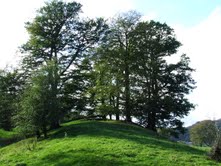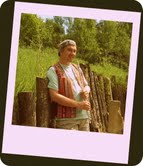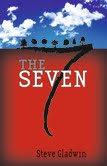Blogs
S4C was launched on 1st November 1982
Prior to the launch of S4C, Welsh language programmes had been limited to occasional broadcasts on BBC Wales or HTV Cymru, often at inconvenient or off-peak times. This was highly unsatisfactory to audiences in Wales, who either wanted a full service in Welsh or who wanted the choice to watch English language broadcasts during the times allocated to Welsh programmes.
The 1970s saw vigorous campaigning for a TV service in Welsh, and by the 1979 election, both major parties had pledged to introduce a Welsh-language fourth channel if they won the election. Shortly after the Conservative victory, the Home Secretary William Whitelaw decreed that Wales should not be granted its Welsh language channel.
Much civil unrest and disobedience ensued, with people risking prosecution and even prison by refusing to pay TV Licence fees, or taking part in sit-ins at BBC and HTV studios. More extreme action included attacking television transmitters.
Then in 1980, Gwynfor Evans, a former president of Plaid Cymru, threatened to go on hunger strike if the Conservative government didn't fulfil its promise to establish a Welsh-language TV service. S4C started broadcasting on 1 November 1982, the night before Channel 4's opening.
On this day in 1895, the last Turnpike toll gate in Wales was removed.
The Rebecca Riots were civil disturbances that occurred between May 1839and the autumn of 1843. They began with an attack on the toll gate at Efail-Wen in Carmarthenshire and continued mainly in west Wales where they were typified by groups of dissenters dressing in women's clothing before destroying the gates of the despised Turnpike Trusts. The hated workhouses were also targeted, as was the home of tithe agent Rees Goring Thomas.
There were many factors which caused the riots. In the early to mid 19th century farmers in west Wales were badly affected by a series of wet harvests, in addition, high rents were levied by largely English-speaking landlords and there was a sudden increase in the population. Taxes that had been levied to pay for the building of new workhouses also generated discontent in rural Wales. One of the main hardships, however, was the network of toll gates that had been constructed almost everywhere in Wales. Turnpike Trusts had initially been founded to repair and maintain road systems, with tolls charged in order to finance improvements. However, by the middle of the 19th century, toll gates had become bitterly resented.
For example, there were 11 different Turnpike Trusts operating around Carmarthen, each with several gates. Each time people passed through a gate they had to pay. The tolls charged by the Turnpike Companies were too high for a struggling rural society. By the end of the 1830s, moving cattle or essential materials like lime and animal food had become prohibitively expensive.
The form of the riots, with men dressing as women, reflected a world that had been turned upside down. It is widely supposed that the name given to the rioters came from the book of Genesis where Rebecca and her daughters claimed to 'possess' the "gates of those which hate them." A simpler answer could be that Twm Carnabwth, one of the earliest known rioters, borrowed his disguise from a woman called Rebecca.
For four years after 1839, toll gates were regularly smashed or burned, and on19 June 1843 2,000 people marched into Carmarthen to ransack the town workhouse. Dragoons charged the crowd, but the riots continued. In August 1843, 3,000 men and women marched on Mynydd Sylen in Pontyberem. Such was the concern of the government that The Times even sent a reporter, Thomas Foster, to investigate the Rebecca Riots. His sympathetic reporting did much to support the grievances of the farmers of west Wales.
The riots finally subsided in the autumn of 1843. The death of Sarah Williams, the aged gatekeeper at Hendy, diminished support for the riots. Over a period of weeks, several rioters were transported to Australia and others detained in prison.
The riots themselves, the journalism of Thomas Foster, forced the government to call a Commission of Enquiry to explore the grievances of the Welsh farmers. In 1844, as a result of the enquiry, the Turnpike Trusts within each county were consolidated, with tolls on commodities such as lime being reduced by half.
'Rebecca and her daughters' seemed to have won their victory, although some of the gates lasted another 50 years.
On 1st November 1455, Edmund Tudor married Lady Margaret Beaufort. Margaret was barely 12 years old, and Edmund was 24. Only a year later, Edmund died of the plague in captivity at Carmarthen, leaving Margaret a 13-year-old widow, seven months pregnant with their child who was to become the future Henry VII.
Edmund was a descendant of the royal house of Gwynedd; his grandfather Maredudd having been a stalwart supporter of Owain Glyndwr's uprising of 1400. His father, Owen Tudor (Owain ap Maredudd ap Tudur), married Catherine of Valois, the widow of Henry V of England, making him a step brother of Henry VI, who knighted Edmund in 1449 and made him Earl of Richmond in 1452. Edmund was fighting for Henry VI (a Lancastrian) during the Wars of the Roses, when he was captured by the Yorkist partisan William Herbert in mid-1456. Edmund was held captive at Carmarthen Castle, where he died of the plague and was buried at Carmarthen Grey Friars. His remains were removed to St David's Cathedral when the monasteries were dissolved.
Margaret Beaufort was the great- granddaughter of John of Gaunt, the son of Edward III, and had been chosen by Henry VI as a bride for Edmund. When Edmund died, she was taken into the protection of Edmund's brother Jasper at Pembroke Castle, where, on 28 January 1457 she gave birth to the future Henry VII of England. The birth was difficult due to her young age and small size. After this difficult delivery, she would never give birth again, although she did re-marry twice.
Margaret and her son remained in Pembroke until 1461 when the Yorkists took the castle. The infant Henry was taken under the guardianship of his uncle Jasper, who carried him from one castle to another, eventually taking him to Brittany to seek refuge, where he remained safe. He saw his mother only on seldom occasions, although they corresponded frequently.
After Henry won the crown at the Battle of Bosworth Field, Margaret was respectfully referred to in court as "My Lady the King's Mother".
As arranged by their mothers, Henry married Elizabeth of York, but Margaret was reluctant to accept a lower status than her daughter-in-law, the queen consort, and walked only half a pace behind her. Henry died on 21 April 1509, having designated his mother chief executor of his will. She arranged both the funeral of her son and the coronation of her grandson Henry VIII.
Margaret always respected the name and memory of Edmund, as the father of her only child and specified in her will that she wanted to be buried alongside him. However, she was buried at Westminster Abbey, probably on the orders of Henry VIII.
On 1st November 1910, coal miners working for the Cambrian Combine began a 10-month strike, which was to lead to the "Tonypandy Riots".
The unrest had begun a year earlier when the pit managers at the Ely pit in Penygraig had devised a scheme to determine the exact output of the mine. They opened a new seam and allowed only 80 miners to mine it for a trial period. A miner's pay at this time was dependent on the amount of coal extracted by each individual, with an allowance paid by the company to bring the pay up to a 'minimum wage' if there was a shortfall. After a few months of the trial period, the managers accused the men of deliberately working slowly, although the miners denied this, telling the company that this was a particularly difficult seam to work. When the test period was over, the company set an unrealistically low price for the coal being extracted from the new seam, below what was considered to be a living wage. The miners protested, and in retaliation the company posted 'lockout' notices on 1st August 1910.
The miners called a strike and were joined by miners from neighbouring collieries. By 1st November a strike was called by the South Wales Miners Federation of 30,000 miners in the Cambrian Combine area, and by November 7, all pits affected by the strike were being picketed.
The situation culminated in what is known as the 'Tonypandy Riots', when thousands of miners marched through the Rhondda valley, filling the streets, gathering at pitheads and in some cases, sabotaging the collieries by extinguishing boiler fires, making the mine unworkable. The local police were worried that they could not contain the situation and called for army reinforcements. On November 22 a group of picketing miners was entrapped by soldiers with bayonets drawn on a hill near Penygraig, where they fought for several hours with troops and police. Eventually, the prolonged lack of pay took its toll on the community and the miners were forced to capitulate. They returned to work in September 1911.
On 1st November 1887, The Helvetia was wrecked off Worms Head, Rhossili, and its remains can still be seen at low tide.
A strong gale off the Gower coast caused two ships to be stranded off Mumbles' Head. They were unable to reach the safety of Swansea Harbour and were blown down the Bristol Channel. One of the ships reached the shelter of Lundy Island, but the Helvetia was swept around the Worm's Head into the shallow waters of Rhossili Bay.
The Helvetia dropped anchor here and the captain was taken ashore by the coastguard. However, he left the crew aboard, as he was reluctant to leave the vessel at the mercy of thieves. Unfortunately, the wind did not die down, and eventually, the ship was abandoned and left to the elements. Her wreck and her cargo of 500 tons of wood were strewn along Rhossili beach, but no lives were lost.
Mark Hughes (born 1 November 1963, in Ruabon, near Wrexham), is a Welsh football manager and former international footballer who played 72 matches and scored 16 goals for Wales.
He played at various times for Manchester United, Barcelona, Bayern Munich, as well as the English clubs Chelsea, Southampton, Everton and finally Blackburn Rovers, before he retired in 2002.
Appointed in 1999, managing Wales was his first managerial position. Although Wales failed to qualify for a World Cup or European Championship during his five years as manager, there was a significant improvement in results. Wales came close to securing European Championship qualification in 2004.
William Mathias CBE (1 November 1934 — 29 July 1992) was a Welsh composer.
Born in Whitland, Carmarthenshire, Mathias played the piano at three years of age and started composing aged five. He attended Aberystwyth University, where in 1954 he wrote 'Gloria in Excelsis Deo' for the Elizabethan Madrigal Singers.He became a fellow of the Royal Academy of Music in 1965, and in 1968, he was awarded the Bax Society Prize of the Harriet Cohen International Music Award. He served as professor of music and head of department at the University of Wales, Bangor between 1970 and 1988.
His compositions include an opera, three symphonies and three piano concertos, though his most famous anthem, Let the people praise Thee, O God was written for the July 1981 royal wedding of the Prince and Princess of Wales, which had a television audience of an estimated 1 billion people.
He founded the North Wales International Music Festival in St Asaph in 1972 and directed it until his death in 1992. He is buried outside St Asaph Cathedral, Denbighshire.
Today is the feast day of St. Cadfan, Abbot of Tywyn & Bardsey (c. AD 530-c. AD 590)
St. Cadfan was a Breton nobleman, the son of Eneas Ledewig (the Breton) and Princess Gwen Teirbron. He was attracted to the ecclesiastical life while still a young man through the influence of St. Winwaloe, his half-brother. He established churches in Brittany before travelling to Wales with a group of missionaries who included St. Tydecho, his cousin, St. Cynllo, Cynan, Llywen and Padarn.
Cadfan founded a monastery at Tywyn in Meirionydd but later sought seclusion on Ynys Enlli (Bardsey). The monastery he established on the island became a destination of pilgrimage for holy men and royalty, and it is popularly believed that not only his original followers but some 20,000 further saints are buried in the Abbey's graveyard.
Cadfan died on 1st November, sometime in the late 6th century and was buried there by his successor, St. Lleuddad. Centuries later, his body was moved to Llandaff Cathedral.
The first episode of Super Ted was aired on 1st November 1982.
SuperTed is a Welsh fictional anthropomorphic bear character created by Mike Young. The character originally featured in stories written by Young to encourage his son to overcome a fear of the dark. These were published as a series of illustrated books, and eventually became a Welsh language animated series on S4C.
SuperTed was produced by Siriol Animation, which Young had set up with his wife, as he was determined to keep the production both local and Welsh speaking. It was later dubbed into English and broadcast on BBC1 throughout the UK.
The world-famous hymn tune 'Cwm Rhondda' by John Hughes was first performed on 1st November 1907
John Hughes (22 November 1873 – 14 May 1932) was born in Dowlais and brought up in Llanilltud Faerdref (in English: Llantwit Fardre). He started work in Glynn Colliery at the age of 12 and eventually became a clerk at the Great Western Colliery in Pontypridd where he was employed for over 40 years. He was a respected deacon and leader of congregational singing in Salem Baptist Chapel.
His initial version of the tune, written in 1905, was called simply "Rhondda", and was composed for the Cymanfa Ganu (hymn festival) in Pontypridd, at the height of the enthusiasm of the 1904–1905 Welsh Revival.
The tune in its present form was adapted in 1907 for the inauguration of the organ at Capel Rhondda, in Hopkinstown. Hughes himself played the organ, using an English translation of William Williams's words to accommodate the large number of English-speaking workers who had migrated to the area.
The name was changed from "Rhondda" to "Cwm Rhondda" by Harry Evans, of Dowlais, to avoid confusion with another tune by M O Jones.
Nos Galan Gaeaf - Halloween
This is a time when Christian and pagan traditions have become intertwined. The festival of Halloween derives from All Hallows or All Saints Day, which was a major Catholic festival. In rural Welsh communities, this time of year was celebrated as the end of the gathering of the harvest and the beginning of winter. The 1st November, became known as Calan Gaeaf and the night before, Nos Galan Gaeaf or Ysbrydnos (Spirit Night) and over the years, many traditions became associated with this time;
* The Harvest Mare - Cornstalks were fashioned into the shape of a horse and hung above the hearth. However the women would try and prevent this happening, by soaking it with water and it was the men's job to try get it inside, still dry.
* Coelcerth - A fire was built, with everyone placing a stone with their name on it, around the fire. If anyone's stone was missing the following morning, they would die the following year.
* Yr Hwch Ddu Gwta - This was reportedly, a black sow without a tail, accompanied by a headless woman, that would roam the countryside.
* Touching ground ivy was thought to make you have nightmares about hags and witches.
* In order to see into the future boys would place leaves of ivy under their pillows and girls would grow a rose around a large hoop, which they would jump through three times before cutting the rose and placing it under their pillow.
* In Pembrokeshire, if people looked into a mirror on Halloween, they would see witches and demons in their sleep.
Llanelli 9 : New Zealand 3
On 31st October 1972, became one of the few club sides to beat the New Zealand All Blacks
Under the expert coaching of Carwyn James and the inspirational leadership of Delme Thomas, Llanelli won this bruising and hard fought encounter at a packed Stradey Park, with Roy Bergiers scoring a try, converted by Phil Bennett and Andy Hill adding a long range penalty.
Born on this day 1920 in Tenby.
Dick Francis - one of the most successful National Hunt jockeys ever and award winning author
Over his racing career, Francis won over 350 races and was the champion jockey in 1953 - 1954. He regularly rode for HM Queen Elizabeth and the Queen Mother, but his perhaps best remembered as the jockey of Devon Loch in the 1956 Grand National, who inexplicably when winning the race, jumped into the air and landed on his stomach.
After retiring from racing, Francis wrote his autobiography, which he followed with forty-three bestselling novels, a volume of short stories and the biography of Lester Piggott.
Born on this day 1922 in Swansea.
John Talfryn Thomas - television character actor.
During World War II, Thomas was a rear gunner on a Lancaster bomber, who survived a crash in which all the other crew members were killed. After the war, he took up acting and trained at the London Academy of Music and Dramatic Art, going on to appear on television in the series, The Avengers, The Saint, Doctor Who and probably in his best remembered role as Private Cheeseman in Dad's Army.
Talfryn also appeared in the 1972 film version of Dylan Thomas's Under Milk Wood, with Richard Burton, Elizabeth Taylor and Peter O'Toole.
On 31st October 2011, a landslide at Porthkerry left several static holiday caravans overhanging the edge of a cliff.
The area known for geological instability and the event was described as being part of the normal process of coastal erosion. The rock fall occurred during heavy rain and close to the time of a high spring tide and it is estimated that around 15,000 m3 of rock fell away. Luckily, no one was injured by the event.
AD SPACE FOR CHRISTMAS NOW AVAILABLE ON AMERICYMRU.NET AND THE WELSH-AMERICAN BOOKSTORE!
By Ceri Shaw, 2013-10-31
It's that time of year to update our advertising inventory and a limited number of ad spots are now available in the right-hand column on AmeriCymru. These ad spots appear on 20,0000+ pages and on the AmeriCymru home page, which has google page rank 4.
Your ads appear with new features - interviews, blog posts, articles - which are syndicated daily to tens of thousands of viewers and on all major social channels (Facebook, Twitter, Google+, LinkedIn, Pinterest, etc.).
AmeriCymru has one 250 pixel x 250 pixel spot at a rate of $75 for six months and four 125 pixel x 125 pixel spots at a rate of $50.00USD for six months.
We are also pleased to now add short-term available advertising spots on our new site, the Welsh-American Bookstore , for $10.00USD per month.
To inquire about an ad or for more information, contact us at americymru@gmail.com and get your message seen by hundreds of thousands of viewers.
Thanks to Ceri and Gaabi for brilliant hospitality while we were in Portland - coffee, beer, late night TV, limo'd all over town like rock stars; and to Phil and Mike for excellent company. PSU was fun, as was Wordstock: that Chelsea Cain is something else! I SO nearly missed the plane the morning I left for New York - always a sign of a seriously good time, just a notch below being carried on to the aircraft on a stretcher. Next time.
Big love!
On 30th October 1799, The Llandovery Bank was established in Llandovery in the premises known as the King’s Head on Stone Street, where it was locally known as the ‘Black Ox Bank’ (‘Banc yr Eidon’ ) because the banknotes were embellished with an engraving on the left hand side of a Welsh black ox.
Historically, the Welsh hill farmers derived their main income from the breeding of black cattle, before taking them into Eastern England to be fattened up before sale in London markets. The long journey home meant that the travellers were vulnerable to attacks from highwaymen and armed gangs, so there became a need to establish a way of transferring the proceeds from the sale to a bank near the home farm.
David Jones, a successful local drover who had also married into a rich family, established the Black Ox Bank in Llandovery, as it was a traditional meeting point of the Carmarthenshire drovers, because of its rich meadow land, ideal for resting the cattle.
David Jones's grandsons continued the Llandovery Bank, and also opened branches at Lampeter and Llandeilo, under the title ‘David Jones & Co.’ This company was sold to Lloyds Bank Ltd in 1909, thus ending the last surviving private bank in West Wales.
Born on this day 1937 in Deri, near Bargoed
Brian Price - former Wales and Lions rugby international. A teacher by profession he later became a journalist and sports presenter for radio and television and in 2006 he became President of the Former Players Association.
Price is perhaps best remembered for the punch that felled Noel Murphy of Ireland, which has down in rugby folk law as, the most famous punch in Five Nations history. Price later explained that he struck because Murphy's fingers were in his eyes and in that situation you don't muck about.
Born on this day 1882 in Penderyn near Hirwaun
Elizabeth Andrews - suffragette and campaigner for women’s rights, who is also credited as being instrumental in the introduction of pithead baths for miners.
Andrews was brought up in a Welsh-speaking, mining family of eleven children and was required to leave school at the age of 13 to help her mother. However, when she was 17, she learnt needlework and moved to Llanwrtyd Wells in 1905 to work in a needlework shop.
Three years later, she was appointed supervisor in a large sewing workshop in the Rhondda, where she met her husband, Thomas T. Andrews, who was a founding member of the Rhondda branch of the Independent Labour Party. She soon developed an interest in politics herself, establishing local branches of the Co-operative Women’s Guild and becoming a member of the suffragettes.
She gained national recognition in 1919, when along with two miners’ wives, she gave evidence to the Sankey Commission, regarding the hardship of the lives of women in mining communities. She emphasized how important it was for the miners to have pithead baths, as otherwise, women had to carry out the heavy and dangerous work of continually boiling water for baths and for cleaning clothes. Subsequently, her evidence was instrumental in the introduction of pithead baths.
Andrews continued to be actively involved in local Labour Party politics, being particularly interested in improving health and education services. She was responsible for the first Nursery School in the Rhondda being opened and elected a member of Glamorgan executive health committee in 1948, by Aneurin Bevan. She received an OBE in 1949 for her service to the public and published a book relating to her life story in 1956, named "A Woman’s Work is Never Done".
The film "The Lion in Winter" was released on 30th October 1968. It starred Peter O'Toole and Anthony Hopkins in his film debut and was filmed on location in Wales despite being set in 12th century France. It tells the story of the battles between King Henry II's three sons to inherit the throne.
Love, Loss and Welsh Myth
 I came to the Vyrnwy Valley in 2001. I hadnt intended to but I fell in love on a storytelling course and my fate was set. Coming to a strange place and a new partner I could never have anticipated that all this would lead to the discovery of a magical grove, a terrible loss and the writing of a childrens book.
I came to the Vyrnwy Valley in 2001. I hadnt intended to but I fell in love on a storytelling course and my fate was set. Coming to a strange place and a new partner I could never have anticipated that all this would lead to the discovery of a magical grove, a terrible loss and the writing of a childrens book.
The Seven was released by Pont Books two weeks ago early and caught us all out. I very much see Celias hand in this. Sadly I lost Celia to cancer in 2006 but it is part of my late wifes mischievous nature to keep us all on our toes like this..
I came to Welsh Myth, and therefore I suppose to Wales in 1992 when I discovered The Mabinogi. It was Pwyll Prince of Dyfedd whose name I still cant pronounce. I always wondered what happened to him later on. I didnt believe Arawn was a nice guy. He didnt seem like it to me.
Later on I rediscovered King Arthur and all those magical tales of childhood and then in 1995 on a druid retreat on Iona the figure of Taliesin came into my life and has never quite let go.
 Then in 1998 I started a story which would fifteen years later re-emerge as The Seven . It was so complicated that I couldnt even tell you the plot or main character. I took so many walks up and down the road where we lived in Somerset and was no closer to knowing. Two years later I met Celia and came to Wales and one winter after a storm we discovered the grove of seven and I named all of them after characters in my complicated story; Child, Dark Lord, Warrior, Queen, Bard, Seeker and Mage. A little green mound of four oaks, two beeches and a single little ash at the top of a steep rise like an upturned half orange with seven cocktail sticks stuck in it. The trees seemed to suit the names and we came there often.After Celia died of cancer in 2006 I threw away everything I had written. As my muse she seemed to be guiding me to do this. As it turns out she was right.
Then in 1998 I started a story which would fifteen years later re-emerge as The Seven . It was so complicated that I couldnt even tell you the plot or main character. I took so many walks up and down the road where we lived in Somerset and was no closer to knowing. Two years later I met Celia and came to Wales and one winter after a storm we discovered the grove of seven and I named all of them after characters in my complicated story; Child, Dark Lord, Warrior, Queen, Bard, Seeker and Mage. A little green mound of four oaks, two beeches and a single little ash at the top of a steep rise like an upturned half orange with seven cocktail sticks stuck in it. The trees seemed to suit the names and we came there often.After Celia died of cancer in 2006 I threw away everything I had written. As my muse she seemed to be guiding me to do this. As it turns out she was right.
I thought Id given her a suitable memorial with our CD version of The Song of Taliesin, (the piece by John Matthews that Id performed for years) in 2009 but she wasnt finished yet. The unwieldy project came back to me as a childrens book and in keeping with my feelings it deals with loss and change and a young boys coming to terms with his mothers death. But it has King Arthur in it and Merlin and Taliesin which she would have loved. And it does tricksy things with the story of Branwen. Its full of Celias kind of mischief but Id like to think that one day soon parents and children can sit and read it together and then talk about loss. She would have loved that.
Seven trees? Seven guardians? Seven helpers? Seven pictures? What's so special about the number Seven? Tony's so full of questions, he thinks his head will burst. But that's nothing new. Since Mum died he's had more questions than answers. Those scary paintings of hers for one thing. And that new girl, Eleri. She's seriously weird. As if she's waiting for something ...or someone ...
On October 29th 1929, the 'Wall Street Crash' in New York, resulted in the Great Depression.
The effect of the 'Wall Street Crash' on Wales;
The American economic collapse had a devastating effect on the industrial areas of Wales, as demand for products collapsed with the result that by the end of 1930, unemployment had more than doubled. It also caused massive emigration, with Wales loosing 390,000 people between 1925 and 1939. Low incomes resulted in poor health and substandard housing and the reduction in unemployment benefit, led to massive protests.
Born on this day 1951 in Cardigan
Brynmor Williams - dual-code, Welsh rugby union and rugby league international, who played in three tests for British and Irish Lions against New Zealand in 1977.
On 29th October 1794, Benjamin Llewelyn was appointed lighthouse keeper of the newly constructed Mumbles Lighthouse.
The Harbour Act of 1791 had allowed for the construction of the lighthouse, which was originally lit by two open-fire braziers. In 1798, these were replaced by a revolving light made up of twelve oil-powered lamps fitted with reflectors, to which a dioptric lens was added in 1860, which greatly magnified the light. In 1935, the lighthouse was converted to an automatic electric control system, which resulted in the lighthouse keeper being no longer required.
The Banc Ty'nddôl sun-disc is a small, decorated, gold ornament discovered in October 2002, at Cwmystwyth, Ceredigion. It is most likely, part of a funerary garment and is thought to be over 4,000 years old, making it the earliest gold artifact found in Wales.
Born on this day 1958 in Ammanford.
Terence David John "Terry" Boyle - former Wales international soccer player, respected for his strong tackling and uncompromising style of play.
Cardiff acheived city status on 28th October 1905 in recognition of its great economic and industrial success.
A timeline history of Cardiff;
Long barrows such as those at Tinkinswood and Coedkernew demonstrate the presence of people in the area in Neolithic times.
The area was populated by the Silures tribe by the first century AD. The origins of the name Cardiff most probably derives from the Welsh/Brythonic name Caerdydd - "fort on the Taff".
The Romans began to settle the area c 75 AD and built a fort on the banks of the Taff, to protect the Severn estuary.
In 1081, the Normans built a castle on the site of the old Roman fort.
In the Middle Ages, Cardiff had developed into a port and trading centre, with a population of approximately 1,500. In 1404, during the rebellion of Owain Glyndwr, the town and castle were burned.
Cardiff was created a free borough in 1542.
Cardiff, strategically positioned at the bottom of coal and iron valleys, benefited greatly from the Industrial Revolution, with the first dock being built in 1830.
By 1881, Cardiff was the most populous town in Wales.
Cardiff achieved city status on 28th October 1905
Cardiff was proclaimed the capital city of Wales on 20th December 1955.
The Empire Games were held in Cardiff in 1958.
Cardiff today is the home of the Welsh Assembly Government and the largest waterfront development in Europe.
How Green Was My Valley, released on 28th October 1941 is a drama film set in the South Wales Valleys and directed by John Ford.
The novel on which How Green Was My Valley is based,is a 1939 novel by Richard Llewellyn, telling the story through narration of the main character, of his Welsh family and the mining community in which they live.
Released on DVD on 28th October 1997, Twin Town, set in Port Talbot and Swansea and featuring an almost exclusively Welsh cast.
In the film, Swansea, is shown as it is viewed by two disaffected young brothers played by real-life brothers Llyr and Rhys Ifans. They steal cars, smoke dope, and generally cause mayhem in the town.
Born on this day 1950 in Tylorstown in the Rhondda Valley.
John Charles Bevan, nicknamed "The Ox" - former Wales and Lions rugby international.
Born on this day 1953 in Cardiff
Philip John Dwyer- former Wales soccer international, who played 471 times for Cardiff City, which is the club's all-time appearance record.
Many thanks to John Good for drawing our attention to this excellent website:- http://whywelsh.wordpress.com/
It seeks to answer misconceptions and explode some myths about the Welsh language.




